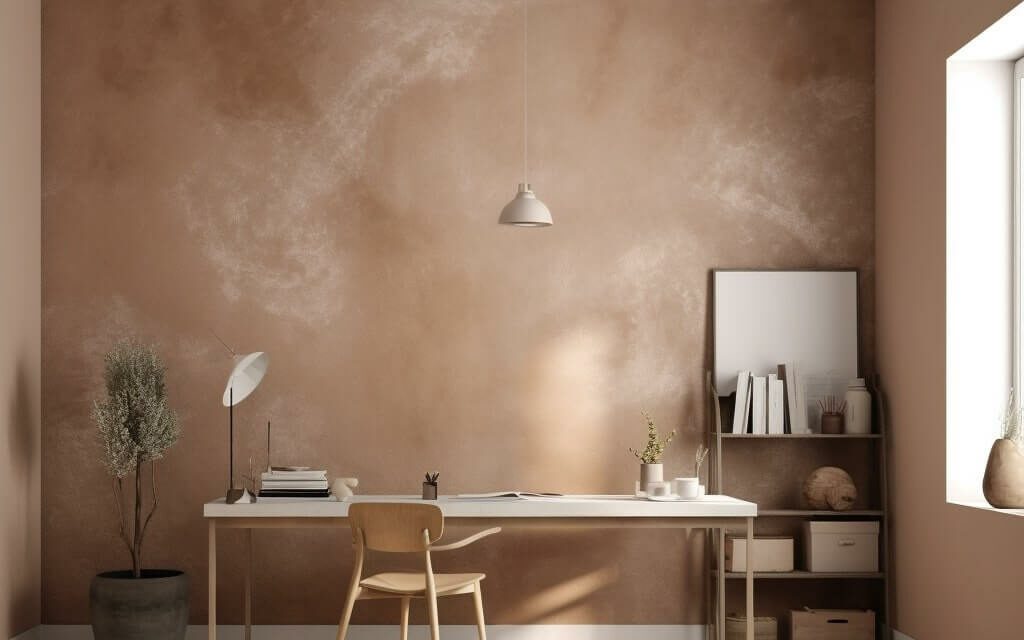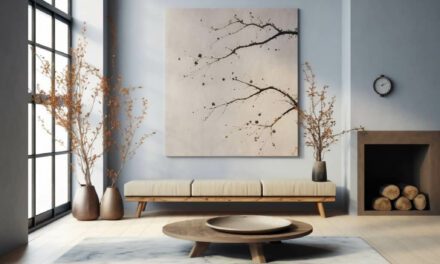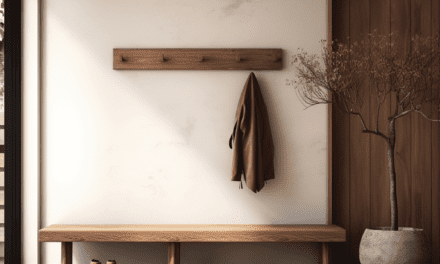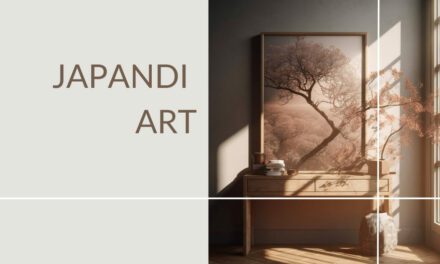When it comes to creating a Japandi office, there’s so much you can achieve with just a minimal amount of effort and expense.
As someone who’s deeply fascinated by this style, I’d love to share my insights on how you can bring this unique blend of Japanese and Scandinavian aesthetics to your workspace.
How to Create a Japandi Office
The Role of Minimalism in Japandi Office Design
Minimalism plays a significant role in the Japandi design philosophy. It’s all about living with what’s necessary, where every item serves a purpose. And isn’t that exactly what we need in an office?
To me, a minimalist Japandi office means a clean desk, free from unnecessary clutter.
I’d say start by reducing your workspace to the essentials.
Only keep what’s necessary for your daily tasks. The computer, perhaps a notebook and pen for jotting down ideas, and maybe a plant for a touch of nature.
In a Japandi office, empty space isn’t wasted space; it’s breathing space. When everything unnecessary is stripped away, what remains has the freedom to speak volumes.
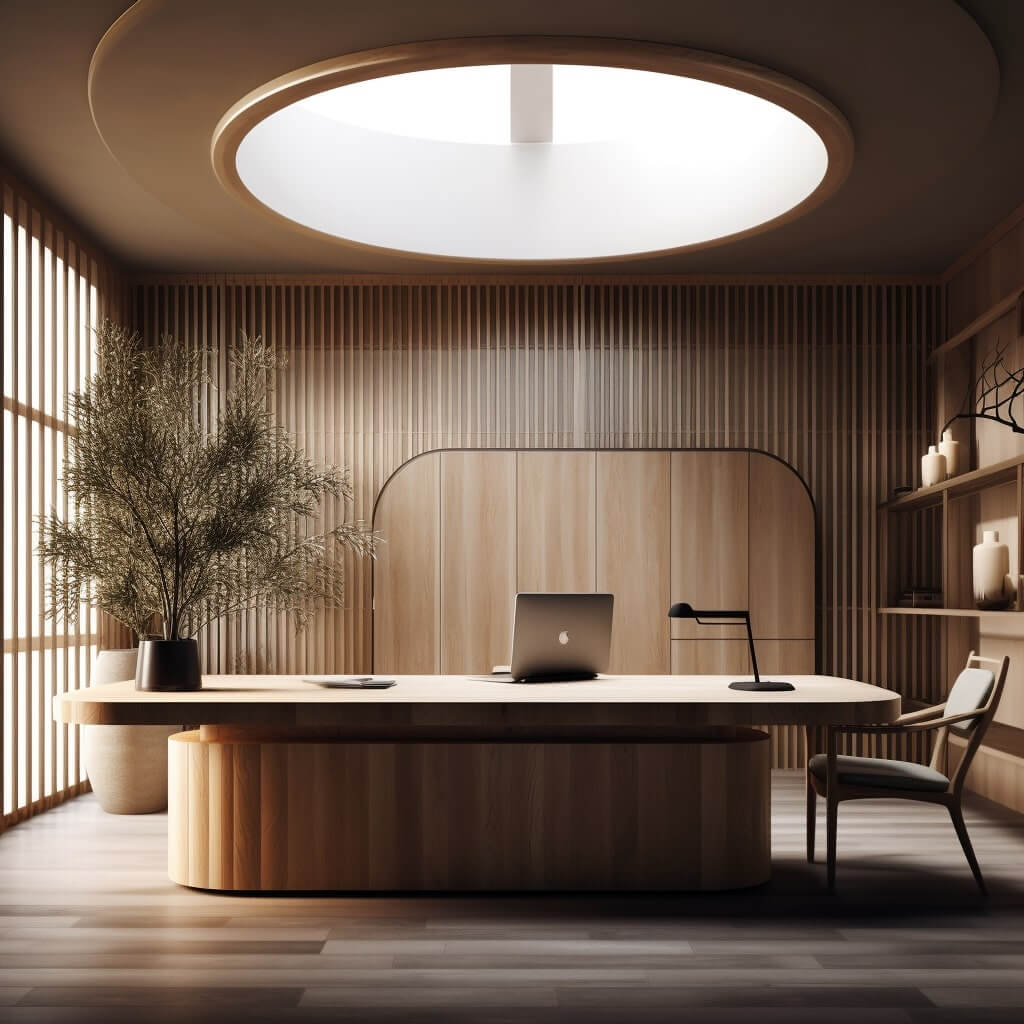
Japandi Color Schemes for Your Office
The Japandi color palette is one of my favorite aspects of this design style.
It’s a beautiful mix of soothing earth tones and muted pastels, borrowed from both Japanese and Scandi design traditions.
To create a Japandi atmosphere in your office, opt for neutrals like soft whites, beiges, and browns. These are great as base colors. Then you can bring in a touch of color with muted blues or greens.
A color scheme following these guidelines will promote a sense of calm and focus, essential qualities for any office space.
I think the muted tones also provide the perfect backdrop to make your carefully selected Japandi furniture pieces stand out.
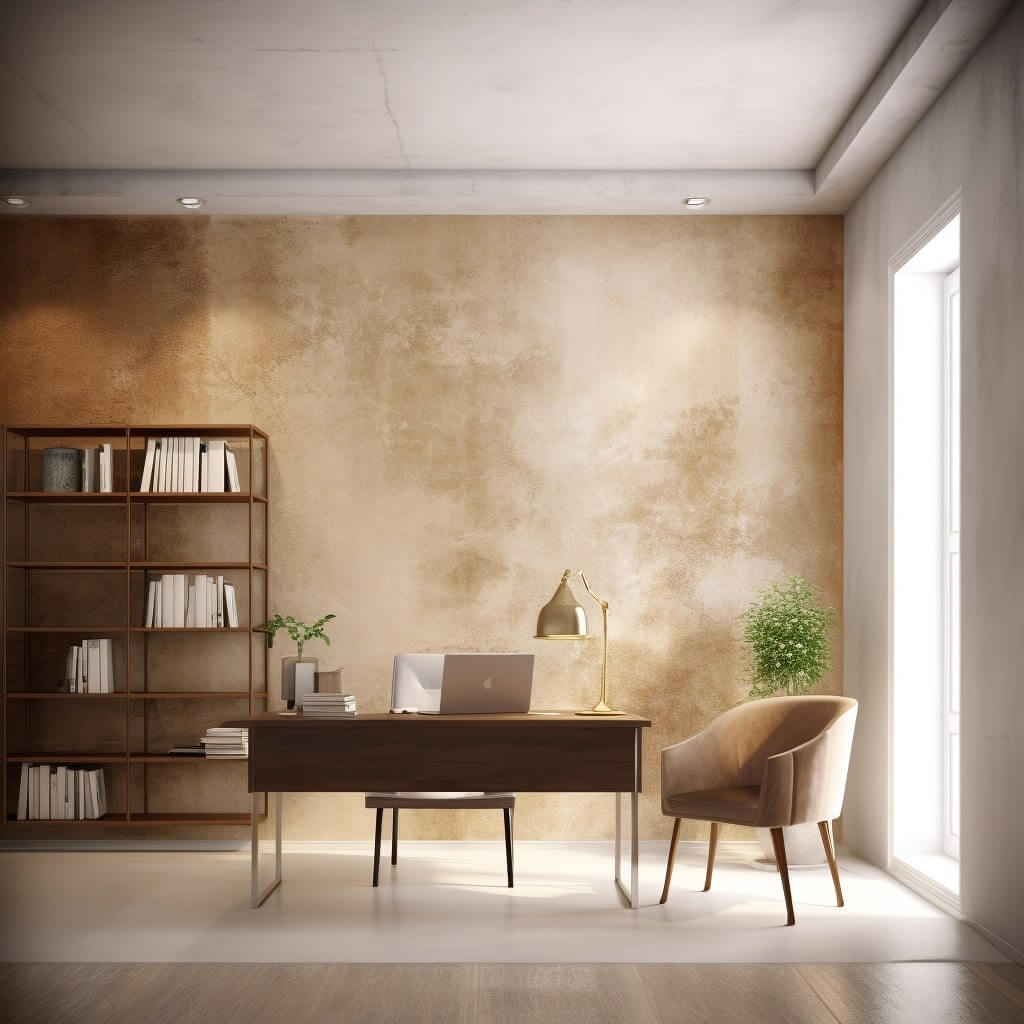
Furniture Selection for a Japandi Office
You’ll want to focus on pieces that are functional and well-made, yet simple and natural in design.
When I furnished my office in the Japandi style, I went for a wooden desk with clean lines and a comfortable, ergonomic chair that matched the wood tone.
I also added a bookshelf with an open design, which allowed me to display a few carefully selected items, thereby respecting the minimalist aspect of Japandi design.
Consider furniture made of natural materials like wood, rattan, or bamboo. These materials reflect the nature-inspired aesthetics of Japandi style and also contribute to a sense of calm and groundedness.
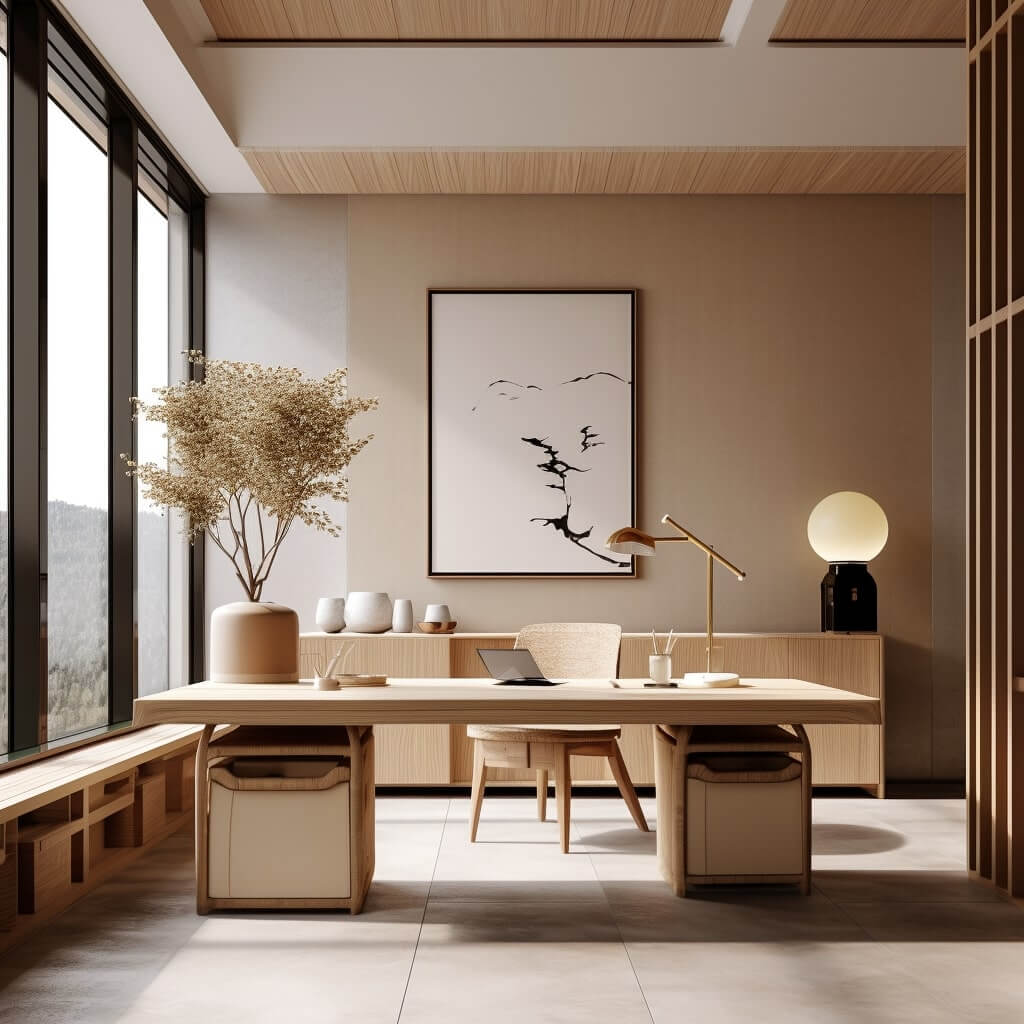
Lighting and Accessories in Japandi Office Design
Japandi lighting is about creating a warm and inviting atmosphere that mimics natural light.
For my own office, I chose a combination of direct and indirect lighting.
A desk lamp with a warm bulb for task lighting, and an indirect floor lamp to create a cozy ambiance. I also made sure to utilize as much natural light as possible.
As for accessories, remember, the Japandi style adheres to a less-is-more philosophy. So, keep accessories to a minimum and choose them with intention.
I decorated my office with a couple of simple, framed Japandi art prints and a small indoor plant. Each accessory was thoughtfully selected and added value to the space.
Overall, creating a Japandi office is about balance – balance between minimalism and comfort, functionality and aesthetics, Japanese simplicity and Scandinavian coziness.
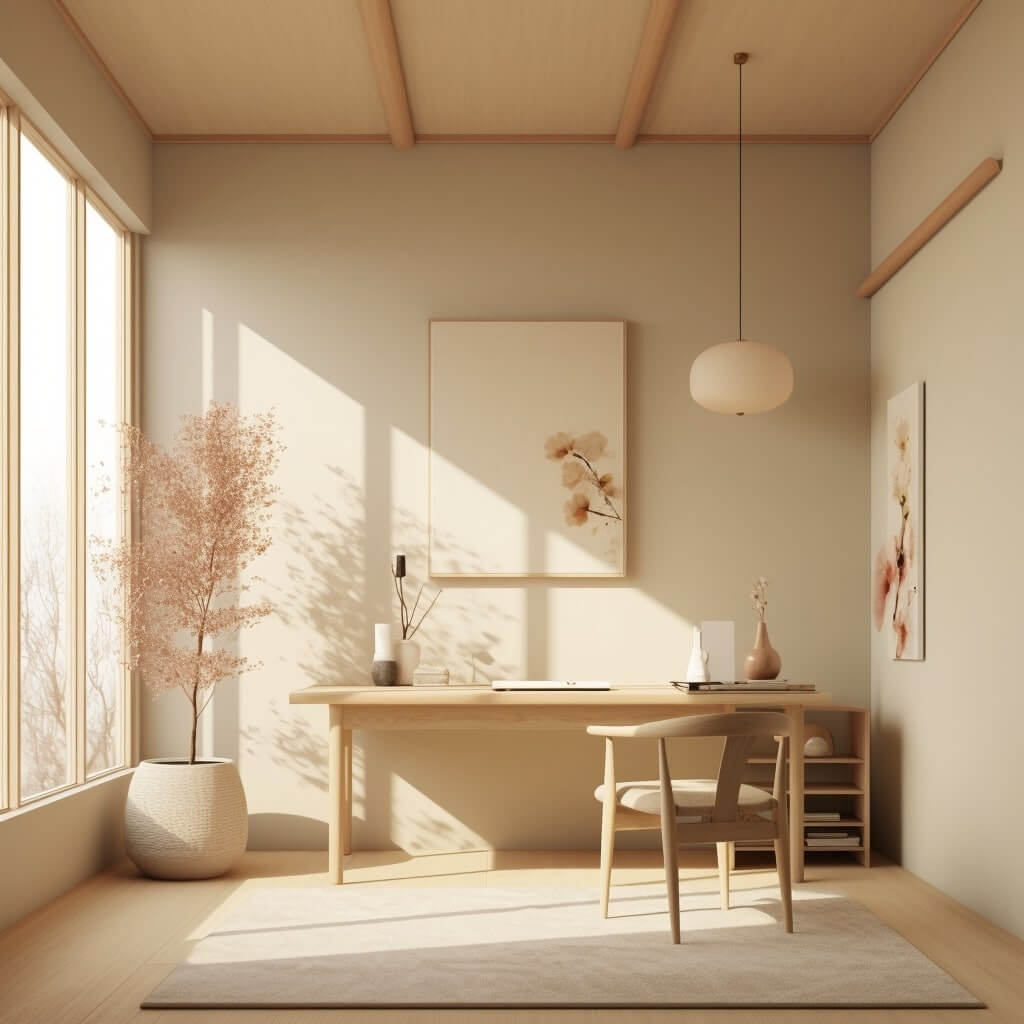
Benefits of Japandi Office Design
As a strong advocate of the Japandi style, I believe it’s not just about aesthetics.
The benefits extend much beyond the visual appeal, positively influencing your productivity, mental well-being, and even your environmental footprint. Here’s how.
Enhancing Productivity with Japandi Design
One of the reasons I’m drawn to Japandi design for an office space is its potential to enhance productivity.
The clean lines, minimal clutter, and a carefully curated mix of functional and aesthetic elements can greatly influence your efficiency at work.
In a Japandi office, every item has a purpose and a place.
This lack of clutter helps to minimize distractions, enabling you to focus on the tasks at hand.
There’s also something to be said about the satisfaction and motivation that comes from a tidy, well-organized workspace.
It also makes you evaluate what is truly necessary in your work environment.
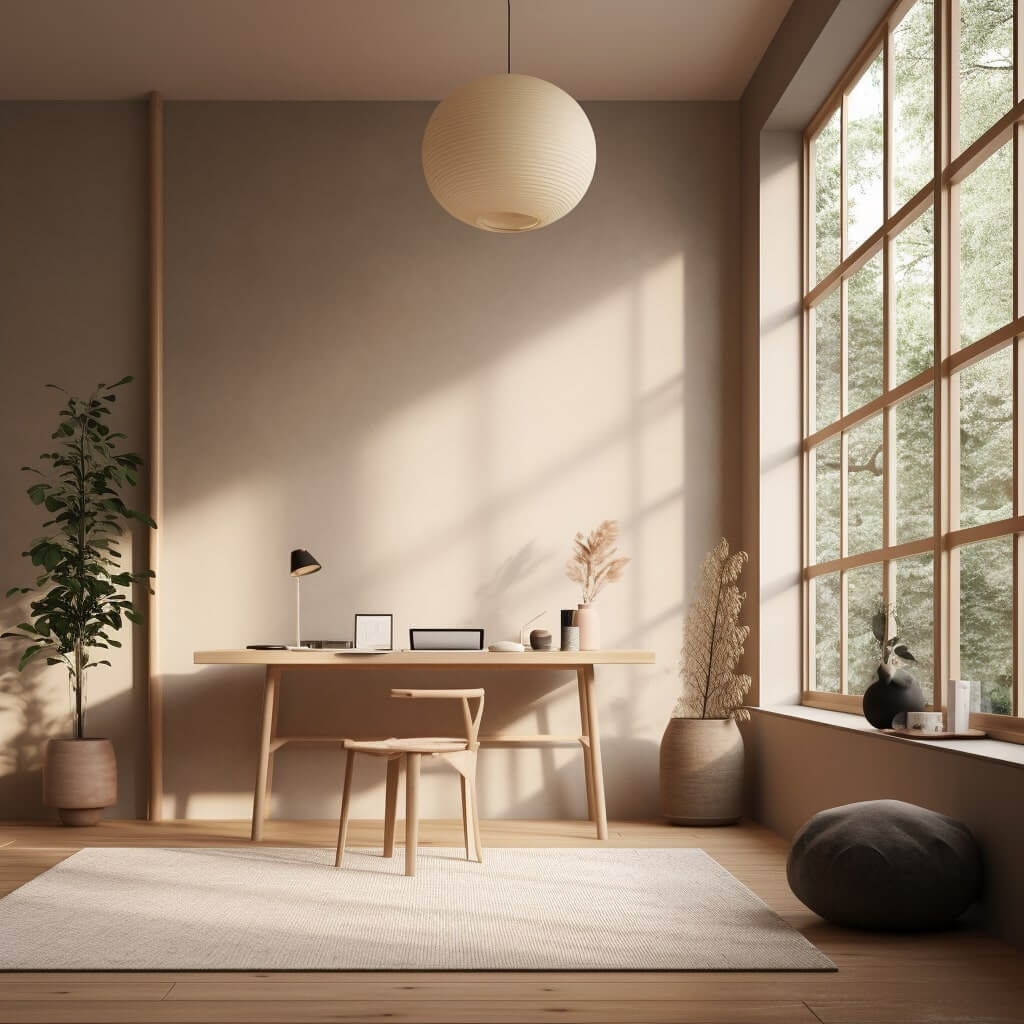
Creating a Calming Workspace with Japandi Aesthetics
The balanced mix of neutral tones and natural elements provides a soothing ambience that helps reduce stress and enhances mental well-being.
In my Japandi office, the earthy color palette and the presence of natural materials like wood and plants help create a sense of peace and tranquility.
It’s not only pleasing to the eye, but it also promotes a sense of balance and serenity that is beneficial during a busy workday.
A calming workspace can help improve your mood and reduce stress, leading to a healthier work-life balance.
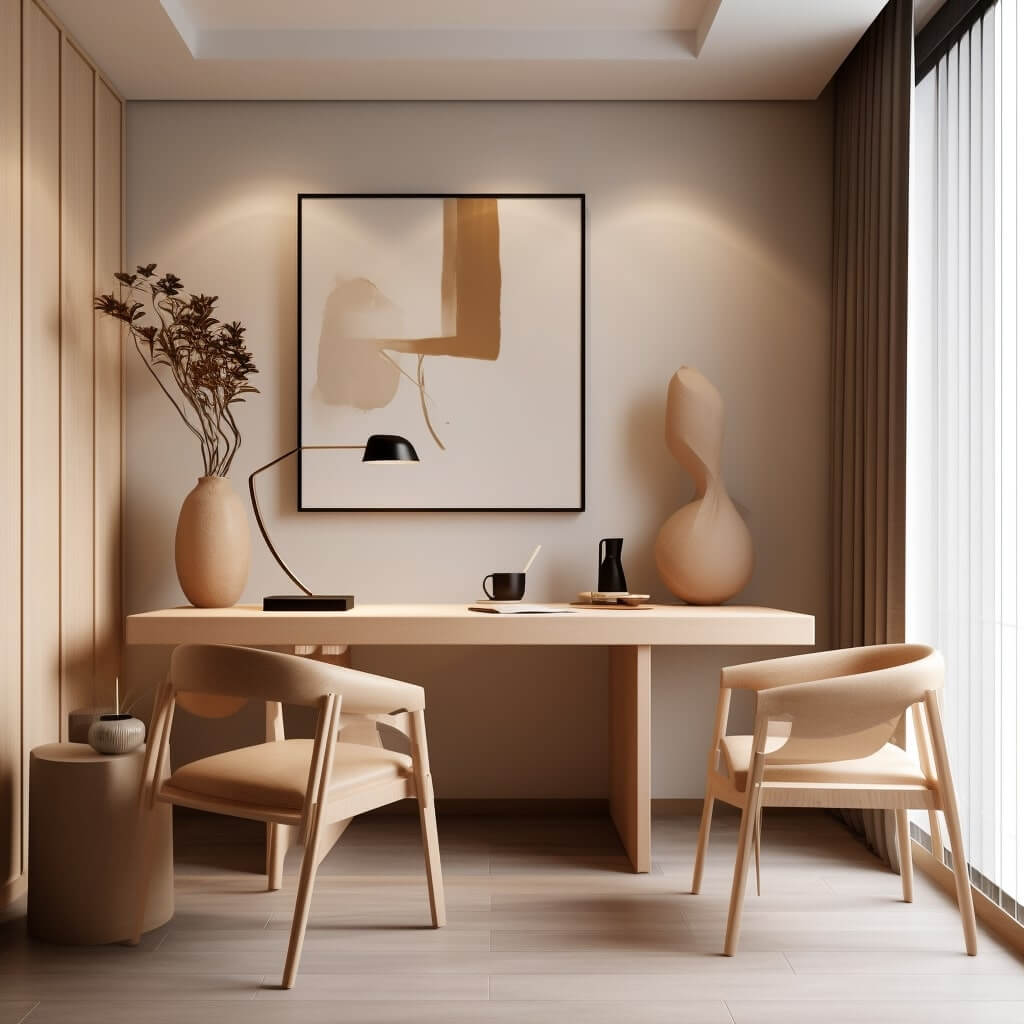
The Environmental Friendliness of Japandi Design
Finally, I can’t talk about Japandi design without highlighting its green credentials.
At its core, Japandi embraces the principles of sustainability, making it an environmentally friendly choice for office design.
The Japandi philosophy values high-quality and long-lasting pieces over cheap, disposable items.
This encourages less consumption and waste, leading to a smaller environmental footprint.
When I was setting up my office, I made sure to select furniture pieces that were not only aesthetically pleasing but also durable and sustainably made.
Moreover, Japandi’s emphasis on natural materials also contributes to its eco-friendliness.
Materials like wood, bamboo, and rattan are renewable, and when sourced responsibly, have a much lower impact on the environment than synthetic materials.
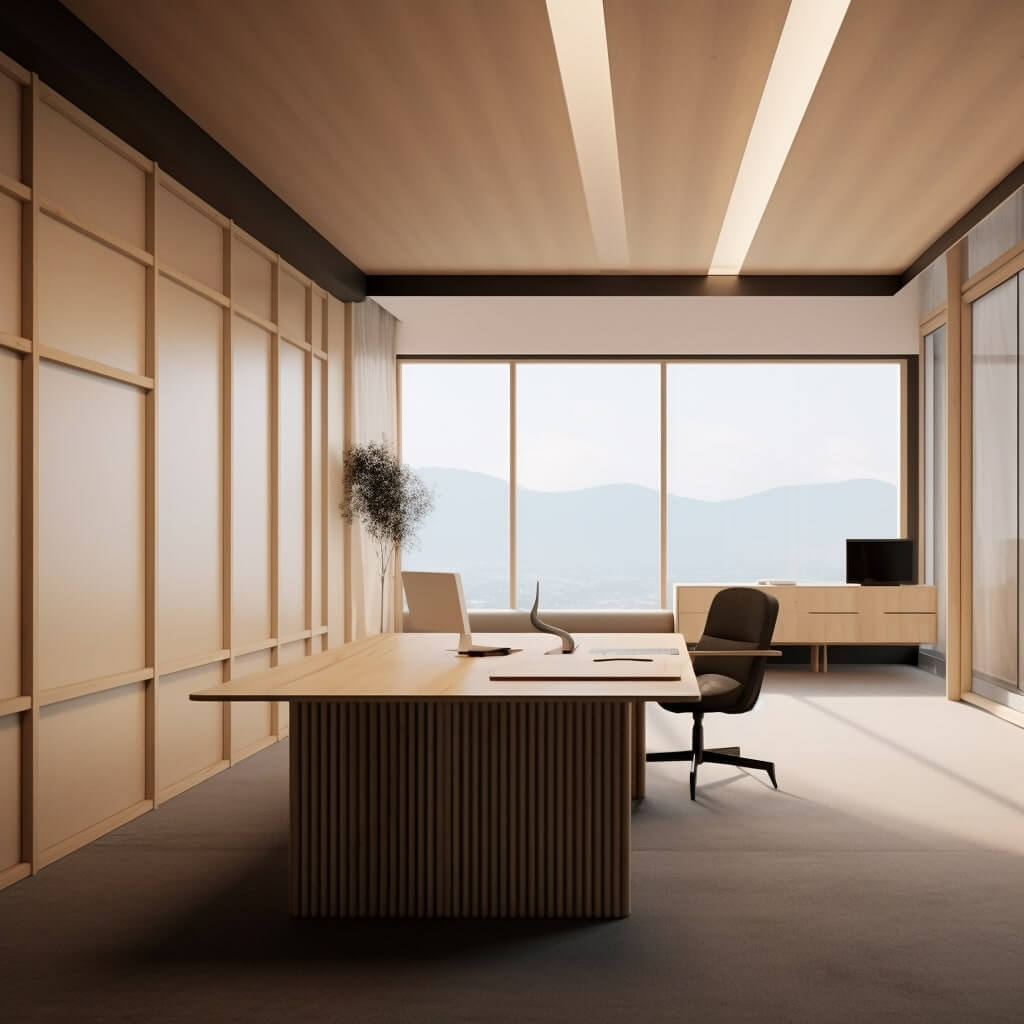
Common Misconceptions About Japandi Office Design
I’d like to address a few misconceptions and clarify some things.
Is Japandi Design Expensive?
One of the most common misconceptions is that Japandi design is expensive.
Yes, it’s true that the design emphasizes quality over quantity, and high-quality furniture pieces may come with a higher price tag. However, the heart of Japandi design is not about luxury, but rather about living with what is necessary and truly loved.
When I set up my Japandi office, I invested in a few well-made, functional pieces rather than cluttering my space with cheaper, less durable items.
It was more of a long-term investment, and it saved me money in the long run because I didn’t need to replace items frequently.
And many of the elements that define Japandi aesthetics—such as the color scheme, the minimalist approach, the inclusion of plants—cost little to nothing.
In fact, the very act of decluttering and simplifying might leave you wondering why you ever thought you needed so many things in the first place.
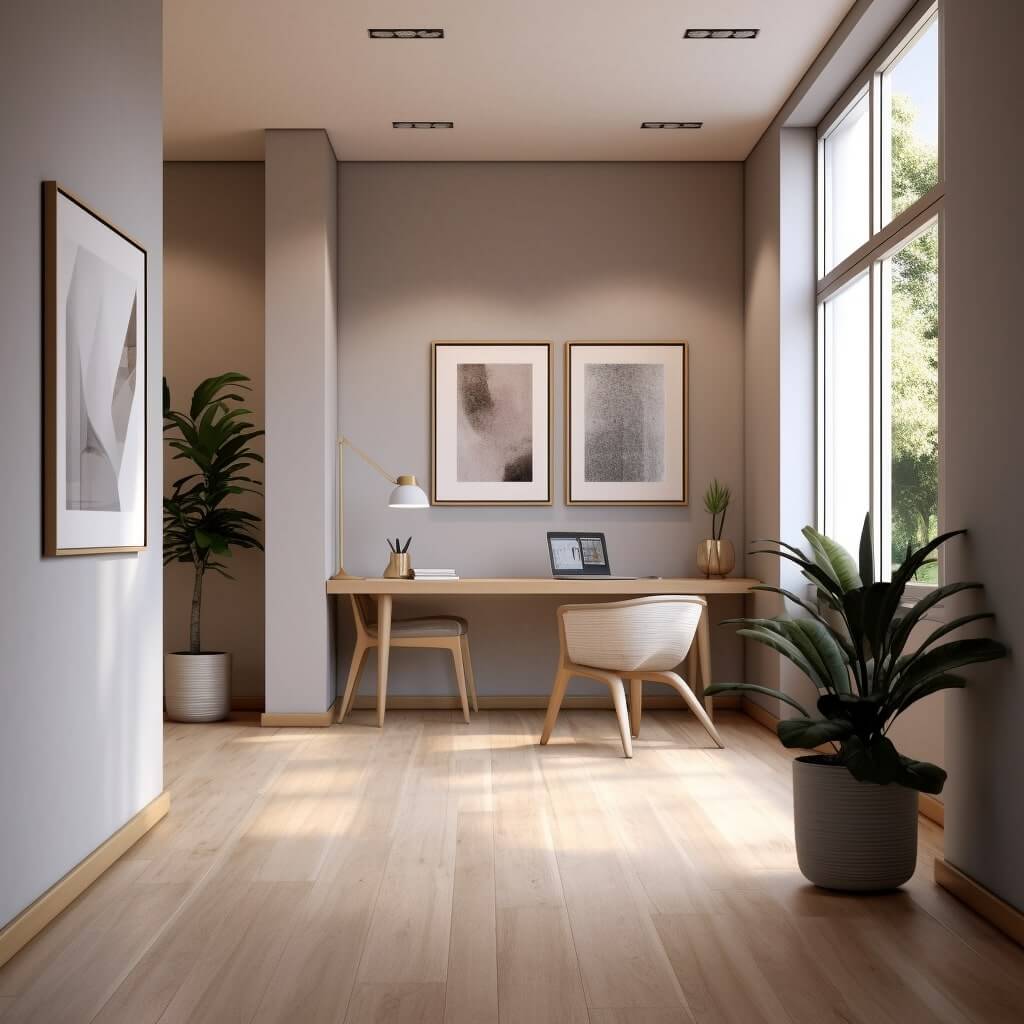
Is Japandi Office Design Too Minimalistic for Creatives?
Another misconception I’ve encountered is that Japandi office design is too minimalistic, especially for creatives who thrive in a more eclectic environment.
However, I’ve found that the minimalism in Japandi design does not equate to sterility or a lack of character.
Rather, it encourages you to curate your space thoughtfully, surrounding yourself with items that not only serve a functional purpose but also spark joy and inspire creativity.
It’s also great for smaller spaces like Japandi-inspired apartments and flats.
Each object in your office becomes more significant because it’s chosen with care.
For my own office, I found that having a clean, uncluttered space with a few carefully chosen items of personal significance actually fostered creativity.
The minimal distractions allowed my mind to focus and the chosen items served as sources of inspiration.
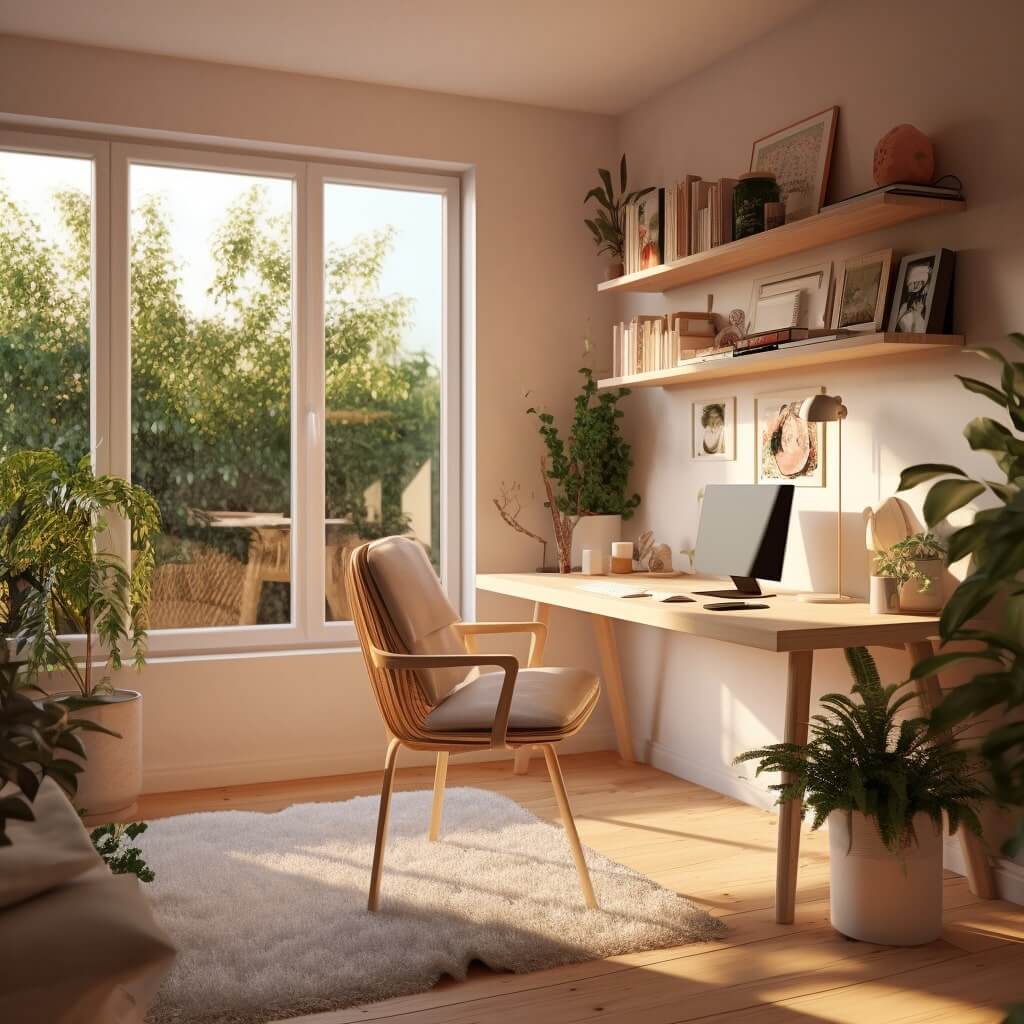
Can Japandi Design Accommodate Technology?
Finally, there’s the question of whether Japandi design can accommodate technology.
The answer is a resounding yes.
Despite its traditional roots, Japandi design is not opposed to modern technology; it’s about integrating it seamlessly into your space.
In my Japandi office, my computer, tablet, and smartphone have their place, just like any other items. The key is to keep your tech organized and avoid letting wires and gadgets clutter your space.
Invest in cable organizers and choose tech accessories that complement your color palette and design theme.
Moreover, Japandi design’s emphasis on functionality is perfectly in line with technology. After all, what’s more functional than modern tech tools that help streamline our work?
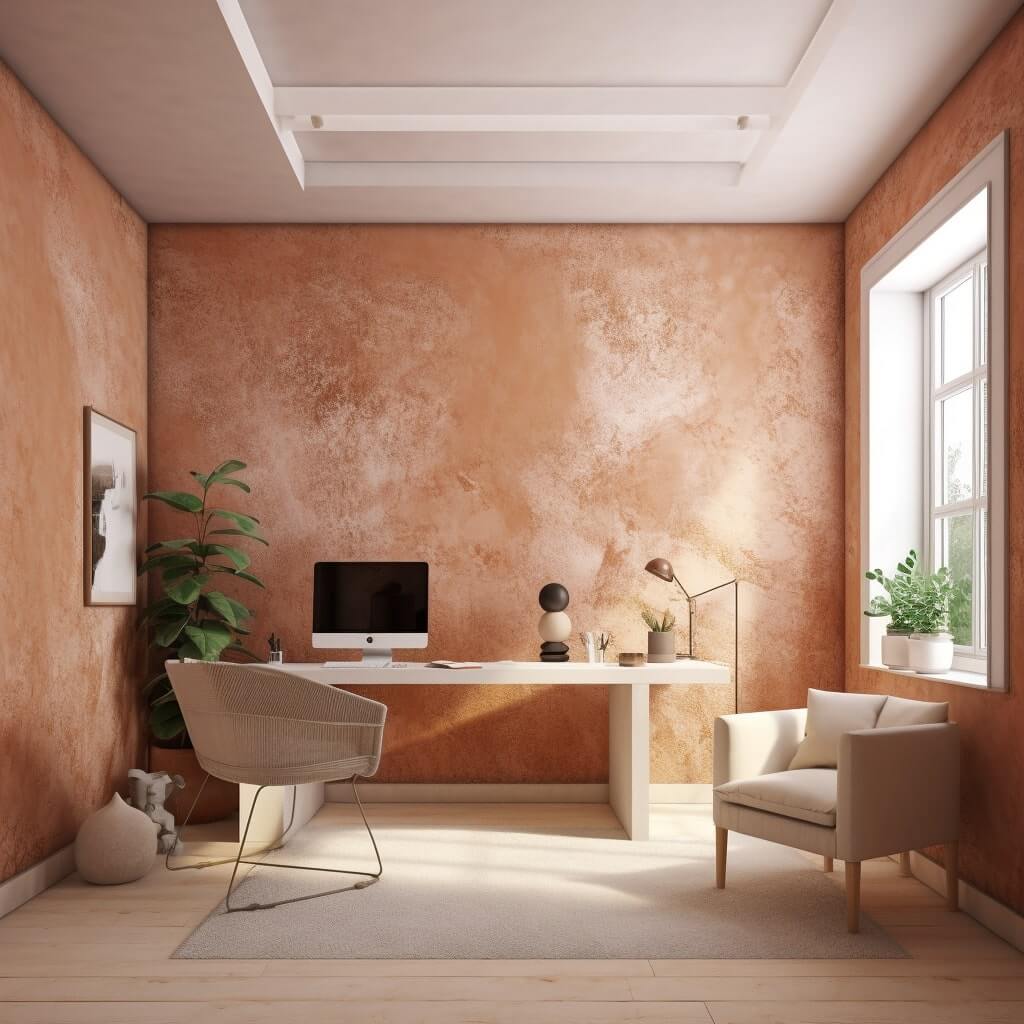
Expert Tips on Mastering Japandi Office Design
As someone who’s spent quite a bit of time researching, exploring, and living the Japandi style, I’ve accumulated a few tips that can help you master this beautiful design philosophy in your office. Here are some insights I’ve gleaned.
The Balance Between Functional and Aesthetic in Japandi Design
Japandi design is all about balance — balance between the functional and the aesthetic, the minimalistic and the comfortable, the Japanese and the Scandinavian.
It’s this unique fusion that gives Japandi its charm and appeal.
When I first started my journey with Japandi design, I found it challenging to strike this balance.
I discovered that the trick lies in careful curation. Each piece in your office should serve a functional purpose while also adding aesthetic value.
Choose a desk that is not only sturdy and spacious enough for your work but also complements the rest of your décor. Opt for storage solutions that hide clutter and also enhance the overall look of your office. This might mean picking open shelves for their airy feel and filling them with beautiful baskets or boxes to store your stuff.
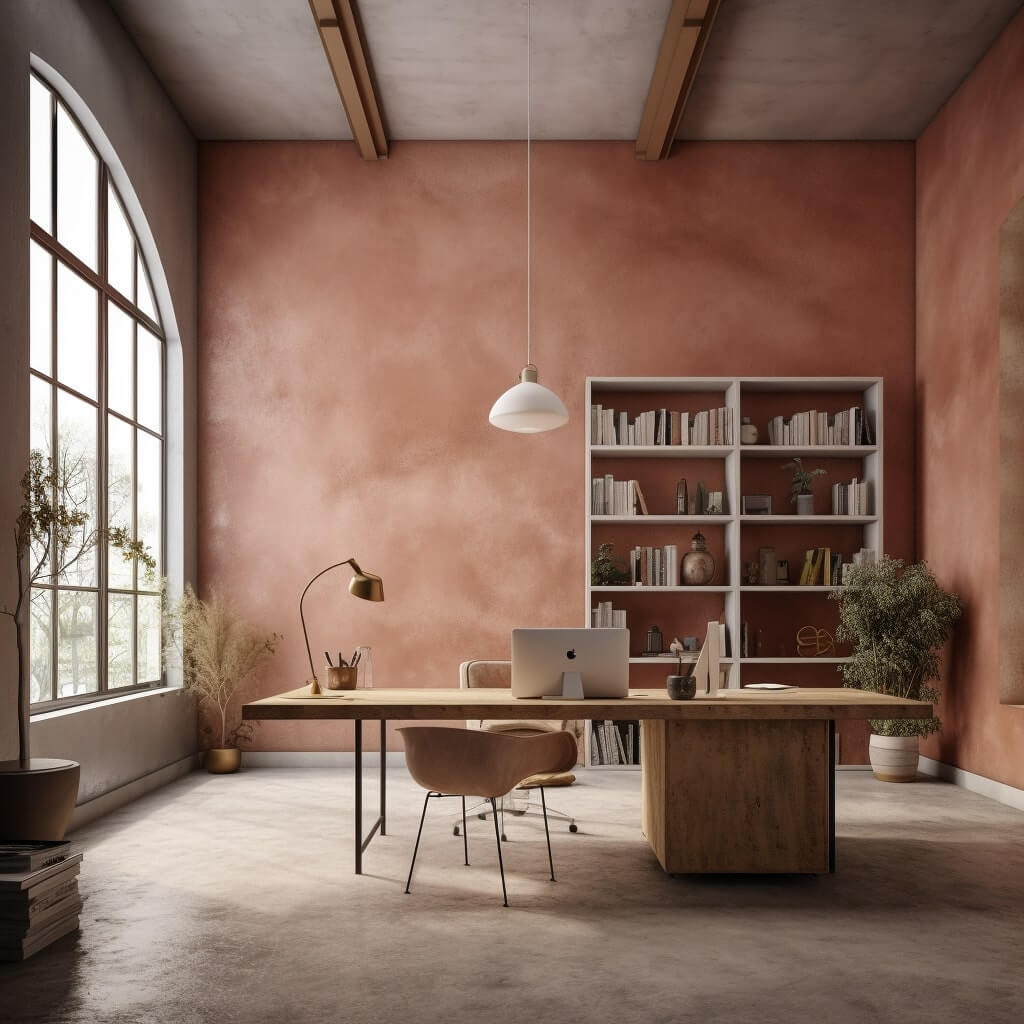
Integrating Nature in Japandi Office Design
Nature is an integral part of Japandi design.
The style’s reverence for the natural world stems from both its Japanese and Scandinavian roots.
When setting up my Japandi office, I found ways to incorporate elements of nature into my space.
I placed a few potted plants around my office — not only do they purify the air, but they also create a serene and calming atmosphere. I also made sure to let in as much natural light as possible.
If possible, choose furniture and Japandi decor made from natural materials, such as wood, bamboo, or stone.
Natural textures add warmth and character to a Japandi space. And don’t forget about the color palette — earthy tones and nature-inspired hues are key to achieving the Japandi look.
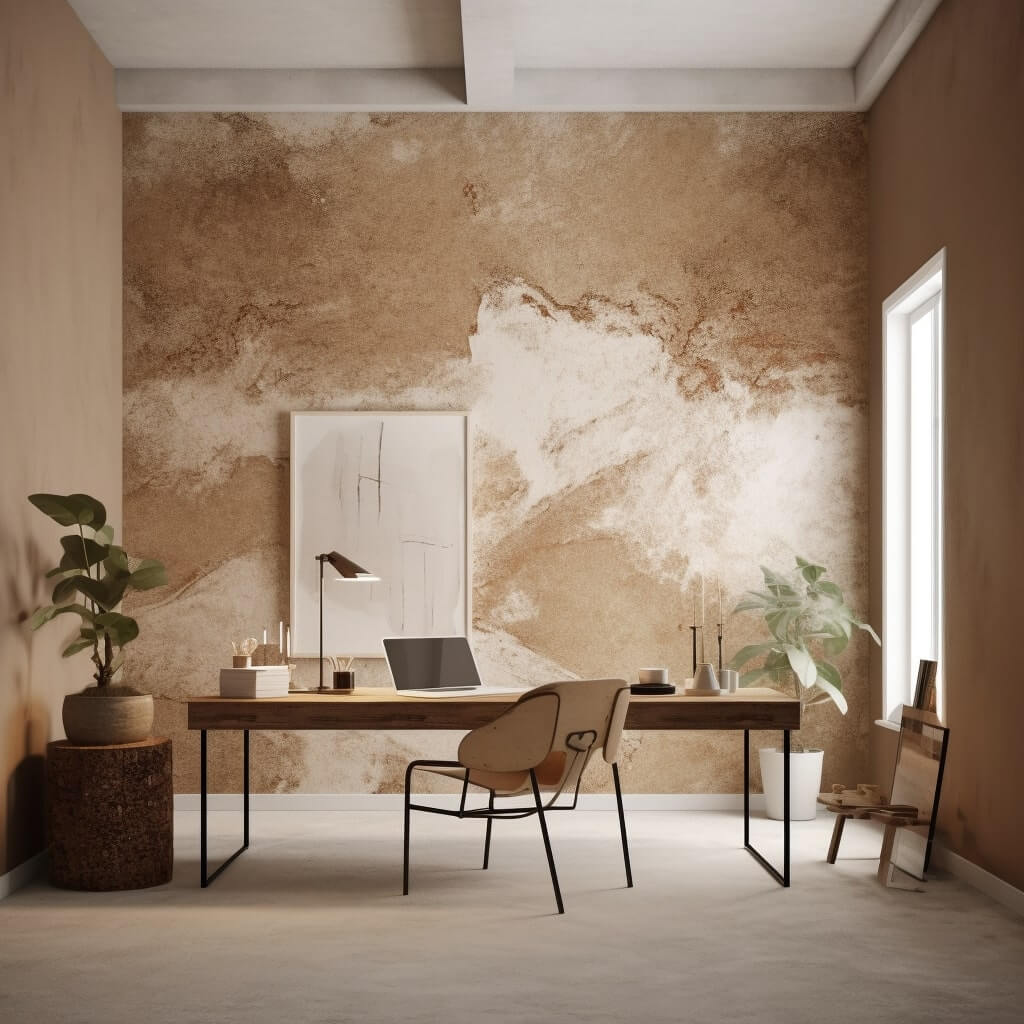
Advice for Maintaining a Japandi Office
Once you’ve set up your Japandi office, it’s crucial to maintain it. One of the key principles of Japandi design is simplicity, which extends to maintenance as well.
In my own experience, maintaining a Japandi office revolves around regular decluttering and cleaning.
I’ve found it helpful to set aside time each week to go through my things and ensure everything is in its place.
I also recommend regularly reviewing your space to see if anything is no longer serving a purpose and can be removed.
It’s easy to accumulate things over time, but remember, Japandi is about living with what is necessary.
Lastly, look after your natural elements. Dust off your wooden furniture, water your plants, and let in sunlight.
This not only keeps your office looking its best but also ensures it remains a welcoming, enjoyable place to work.
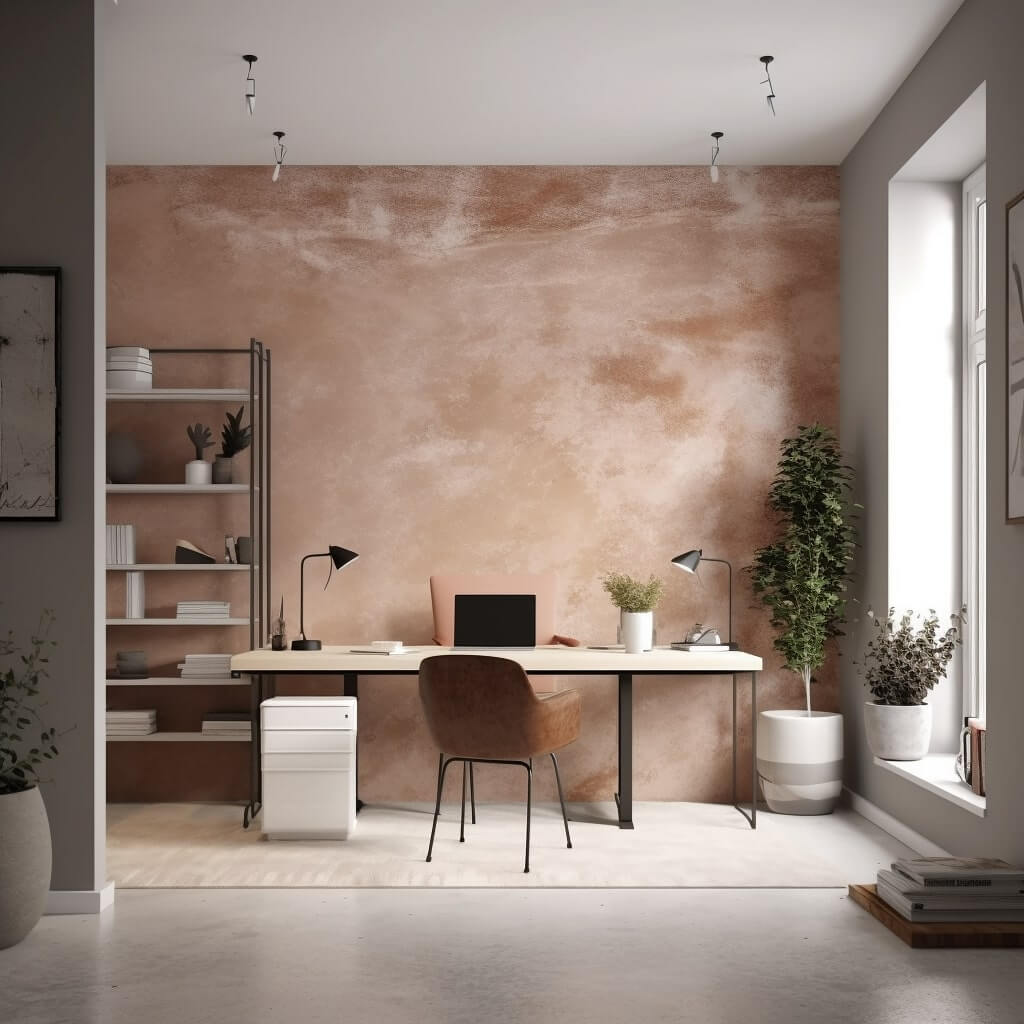
FAQs
What are the rules of Japandi style?
Japandi style blends Japanese simplicity with Scandinavian functionality. It emphasizes minimalism, nature, craftsmanship, and a balanced color palette of muted tones and earthy hues.
What is the difference between Scandi and Japandi?
Both Scandi and Japandi designs prioritize simplicity and functionality, but Japandi incorporates more natural elements and earth tones while Scandi leans towards lighter, more neutral colors and modern materials.
Where is Japandi style popular?
Japandi style has universal appeal, but it’s particularly popular in design-conscious regions such as Northern Europe, North America, Australia, and of course, Japan.
Why is it called Japandi?
Japandi is a portmanteau of ‘Japanese’ and ‘Scandinavian.’ It signifies the blending of these two design philosophies that value simplicity, functionality, and nature.
How to choose a Japandi Office Desk?
A Japandi office desk should be functional, minimalist, and made from natural materials. Look for clean lines, a sturdy build, and a muted, earthy color.
How to decorate a Japandi Study Room?
In a Japandi study room, use a neutral color palette with pops of muted colors. Include natural materials, declutter regularly, and carefully curate functional and aesthetic pieces.
What’s a good Japandi office layout?
A good Japandi office layout prioritizes open space and minimalism. Organize the room to minimize clutter, with designated spots for all items, and allow for plenty of natural light.
What are some popular pieces of Japandi office furniture?
Popular Japandi office furniture includes minimalist desks and chairs made from natural materials, open shelving units, and functional storage solutions with clean, simple designs.







